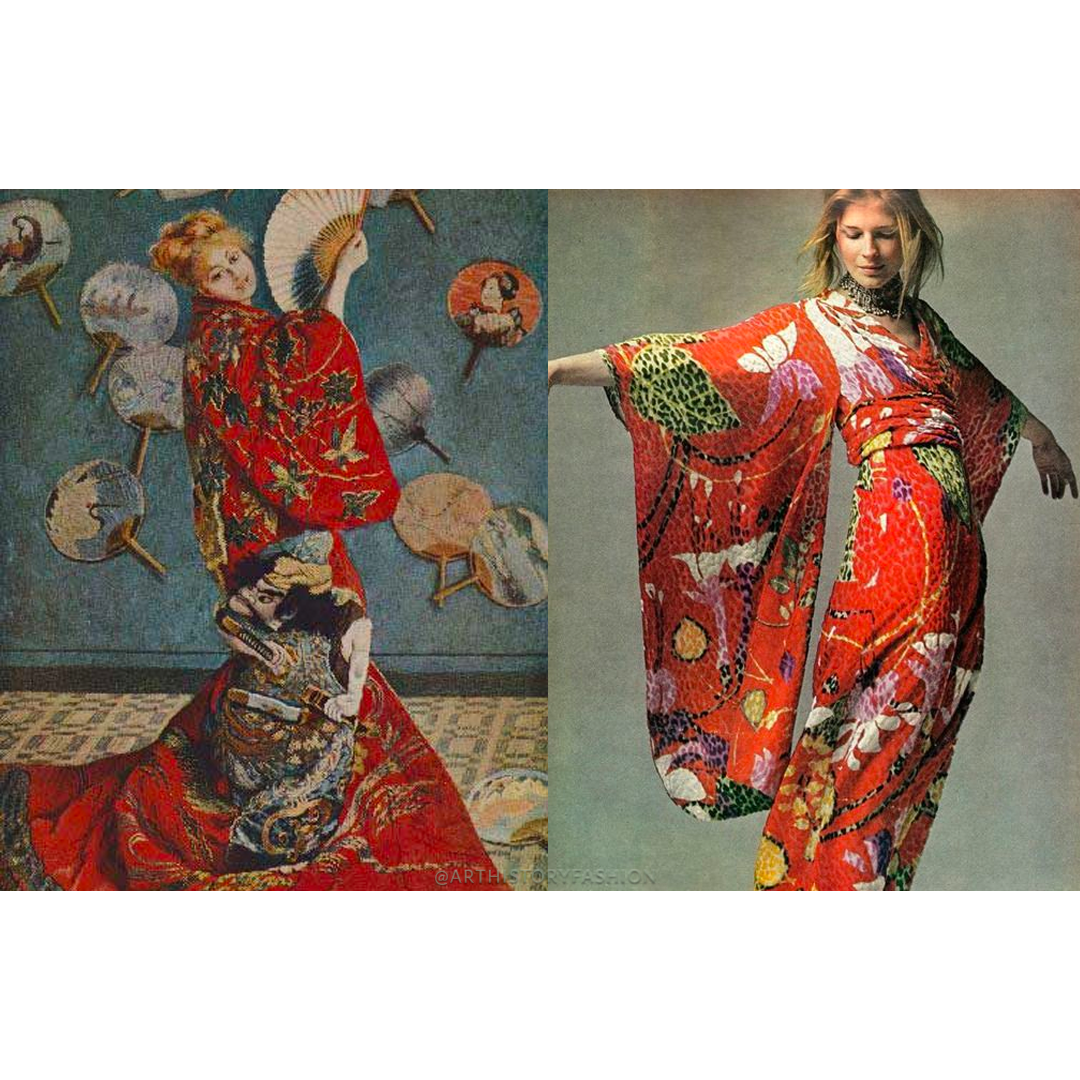When the kimono came West
When Kim Kardashian West unveiled her new shapewear line "Kimono", I was pretty peeved. I'm Japanese, descended from textile designers, and have worn various unique kimonos for ceremonious events. Kimonos are a source of pride for myself and many Japanese people. I'm also very much aware of how prevalent and complex cultural cross-pollination is, how it can enrich our lives, further our understanding of the world, inspire the imagination, promote empathy...and how cultural artifacts can be offensively taken out of context, used as a means of profit and erasure.
Here's the age-old question: At what point is engaging in another culture appropriation rather than appreciation? How can we appropriately be inspired by a culture we don't "belong" to?
Let's take a look at another time when kimonos did inspire the West and how admiration of Japanese culture influenced one of the greatest modern art movements the world has ever seen....Impressionism.
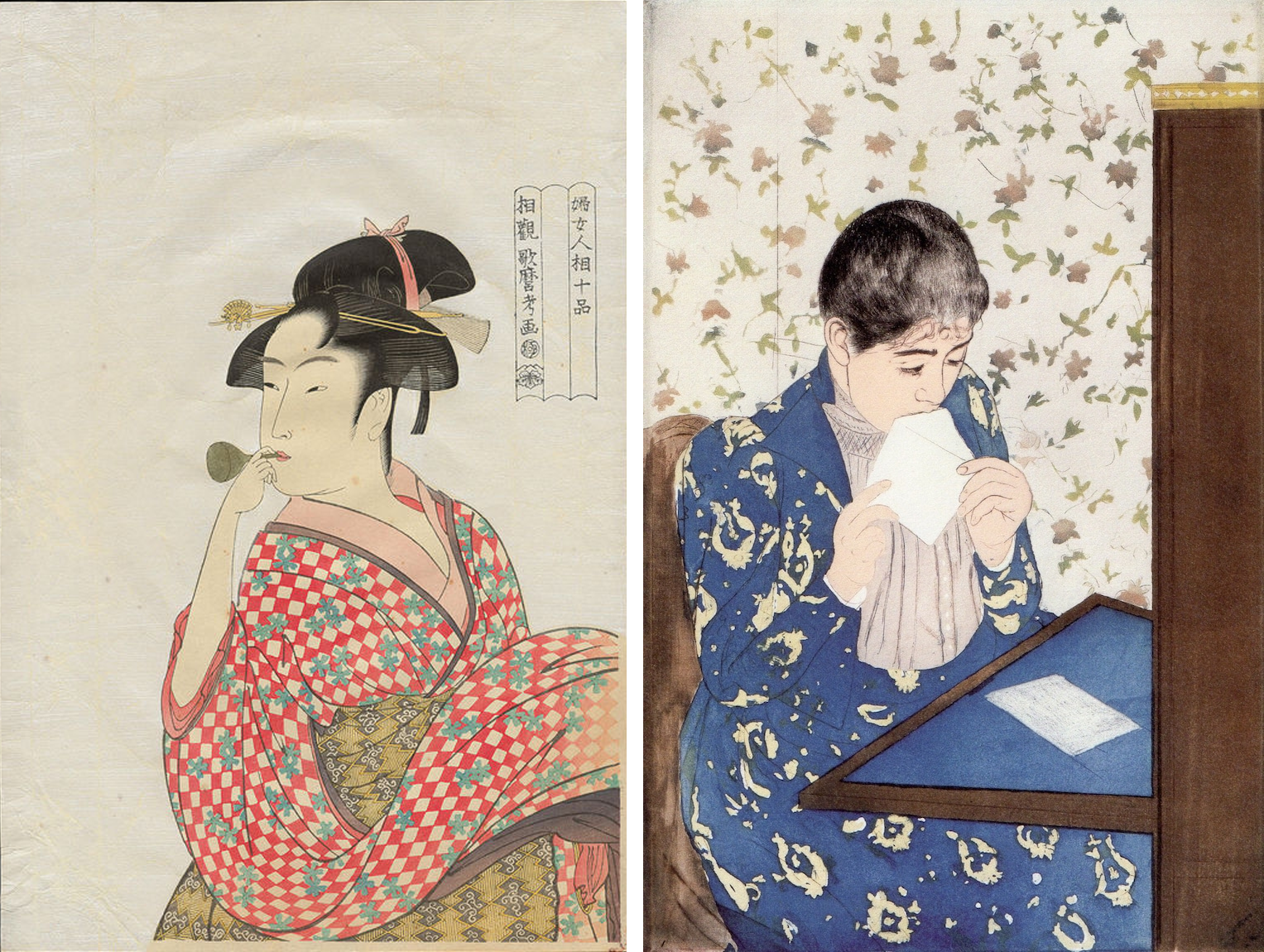
"Poppin" by Kitagawa Utamaro (1790s) & "The Letter" by Mary Cassatt (1890-1891)
Japan opens for trade
The year is 1853. Four American naval ships under the command of Commodore Matthew Perry arrived off the coast of Japan while the power of the Tokugawa Shogunate was crumbling internally. Japan's ports had been mostly closed to foreign powers since the early 17th century and past American expeditions aimed at establishing trade had failed. Perry, however, threatened bombardment if the country did not open its ports. After nearly 200 years of isolation from the West, trade officially began and Japanese goods such as kimonos, fans and ukiyo-e woodblock prints flooded into Europe and the US.
The Western art world was forever changed.
The treatment of perspective, composition and subject matter in Japanese art was something European artists had never seen. It's important to remember that art in the West at the time was tied deeply to classical values influenced by ancient Greek and Roman art and the Renaissance. Aesthetic ideals, proportion, balance, realism, depth…these were the elements that were recognized and dominated European art.
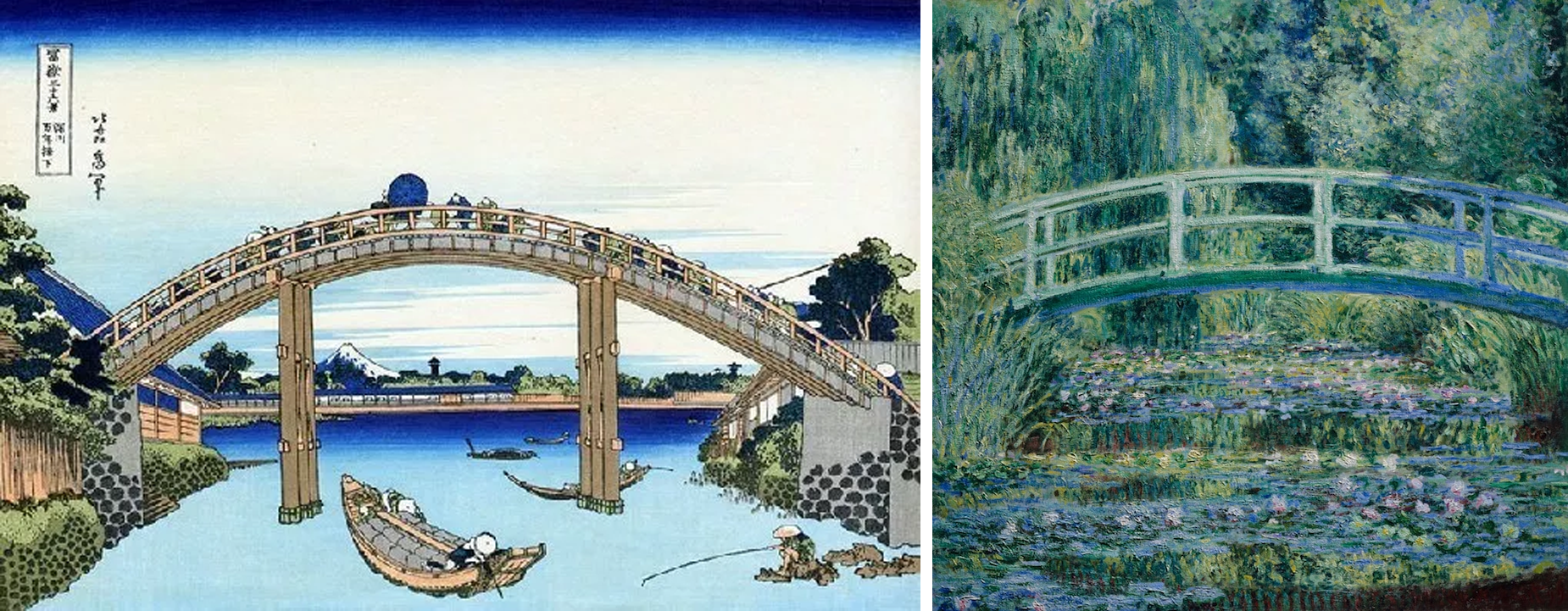
"Under Mannen Bridge at Fukagawa" by Katsushika Hokusai (1830-1832) & "Water Lilies and Japanese Bridge" by Clause Monet (1899)
Rather, Japanese art featured highly decorative, quotidian scenes from nature and daily life. Lacking the high contrast chiaroscuro which gave European works their dramatic, three-dimensional feel, ukiyo-e prints were characterized by a flat composition, with strong contours and bright swaths of color establishing the scene. The perspective of the woodblock prints were also quite peculiar, often viewing the scene from a top-down, asymmetric vantage point.
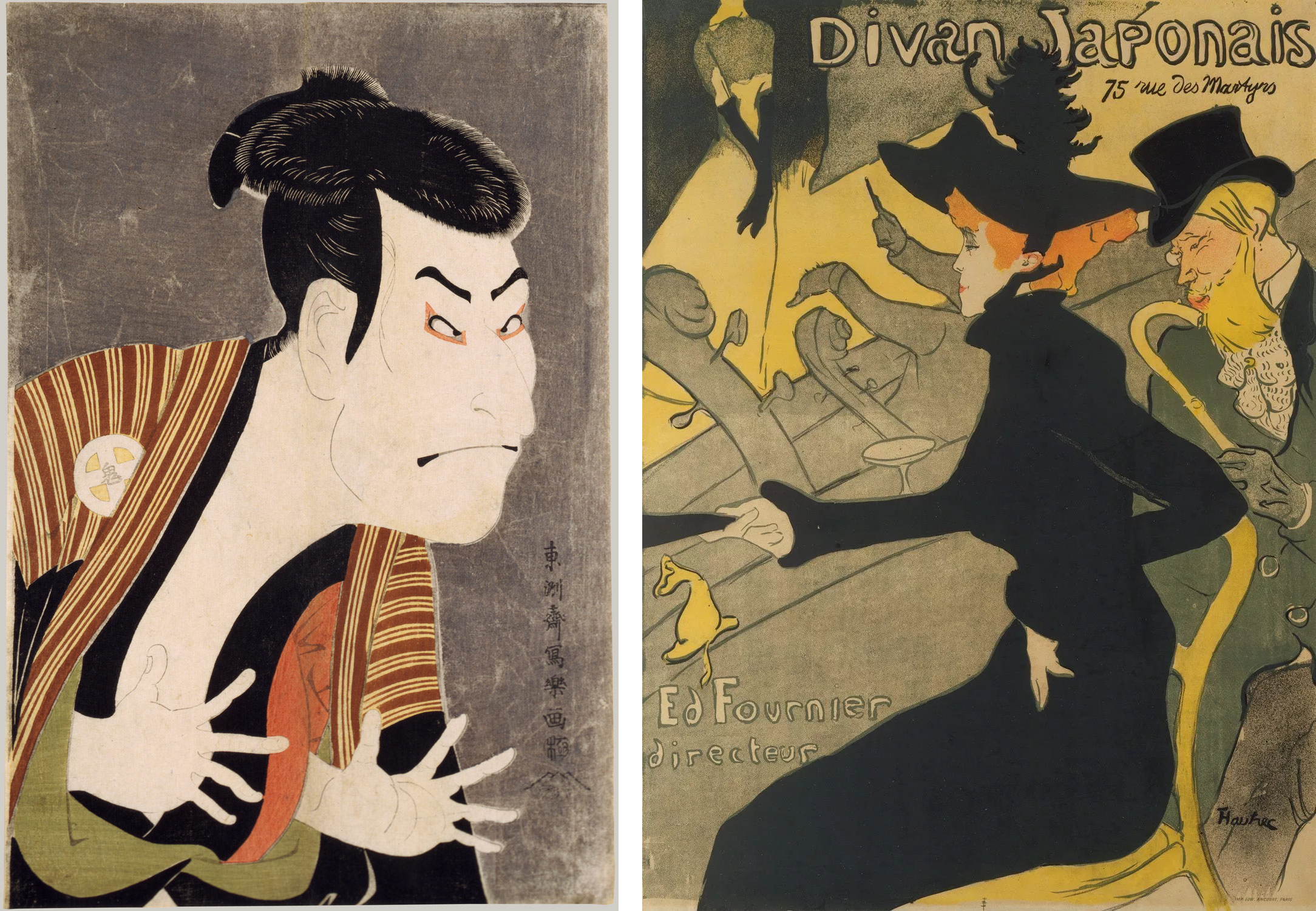
"Ōtani Oniji III in the Role of the Servant Edobei" by Tōshūsai Sharaku (1794) & "Divan Japonais" by Henri de Toulouse-Lautrec (1893-1893)
Artists such as Claude Monet, Vincent van Gogh, Edgar Degas and Frank Lloyd Wright became collectors of ukiyo-e prints. Many Parisians were first exposed to Japanese art and artifacts at the World Exposition in Paris in 1867. Mary Cassett encountered the ukiyo-e aesthetic at an 1890 exhibition at the École des Beaux-Arts. Within years, the soon-to-be Impressionists began incorporating the philosophies and techniques of Japanese art into their own.
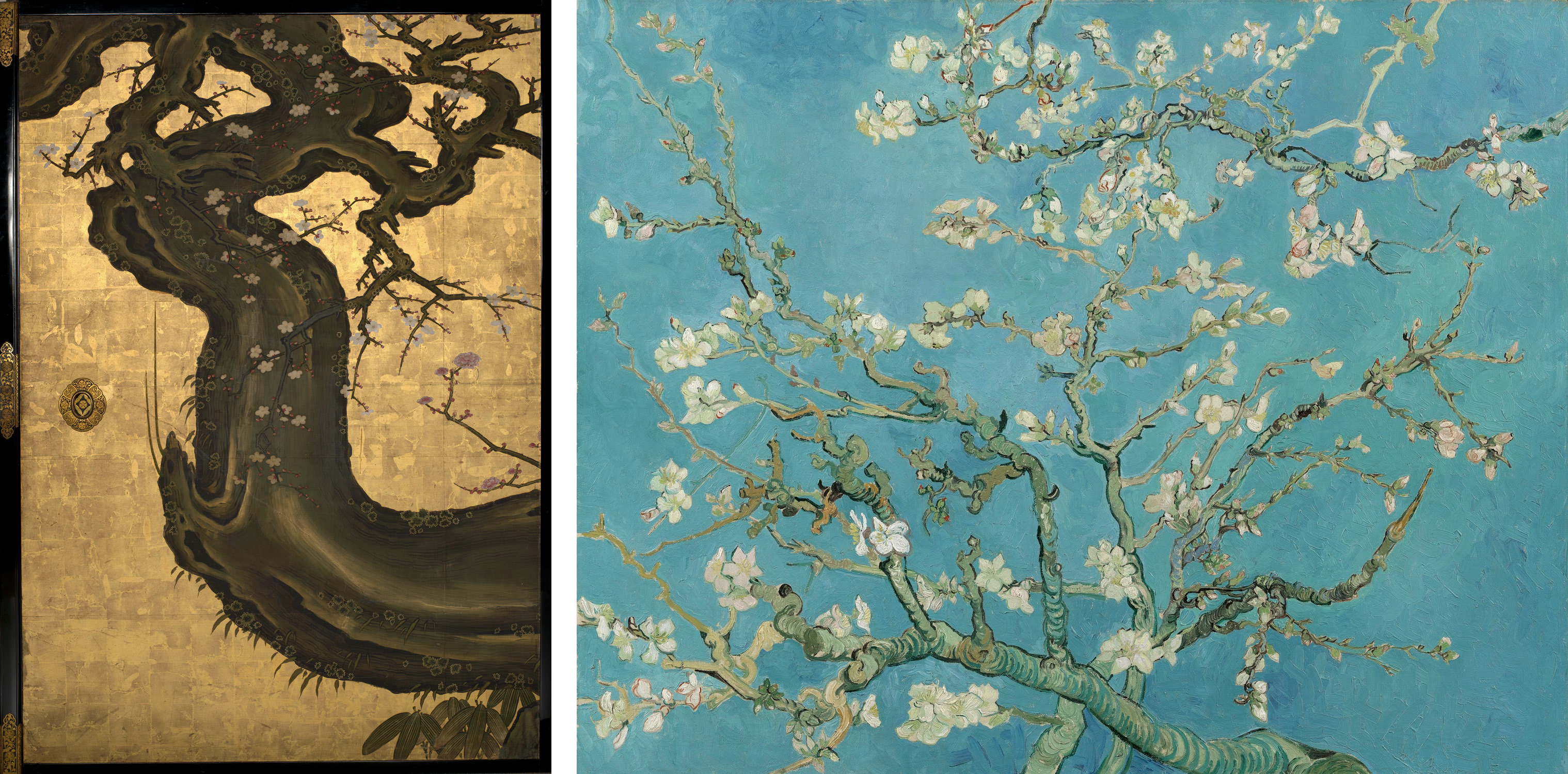
"Old Plum" by Kano Sansetsu (1646) & "Almond Blossoms" by Vincent van Gogh (1890)
Japonisme
During this time, the term “kimono” was officially coined in order to distinguish it from the Western garments that were now being introduced. “Kimono” became an umbrella term in which many different types of Japanese garments (yukata, kosode, uchikake, etc.) fell under. A single, distilled term was also easier to market to foreigners. Artifacts such as kimonos were showcased overseas at expositions and soon found their way into window displays all the way in London boutiques, creating a frenzy among wealthy Europeans. The craze for all things Japanese was so intense, in 1874, the French critic and collector Philippe Burty gave it its own term: "Japonisme”. At the same time, Western dress was incorporated into Japanese culture as a symbol of modernity and diplomatic equality. The Meiji Emperor and Empress wore Western styled dress to signify to diplomats that Japan deserved better treaties with their countries. Starting in the 1870’s, those who interacted with Western government officials were required to wear Western dress at diplomatic events such as official state dinners. Taken in broader context, sartorial decisions often represent desires far beyond elegance.
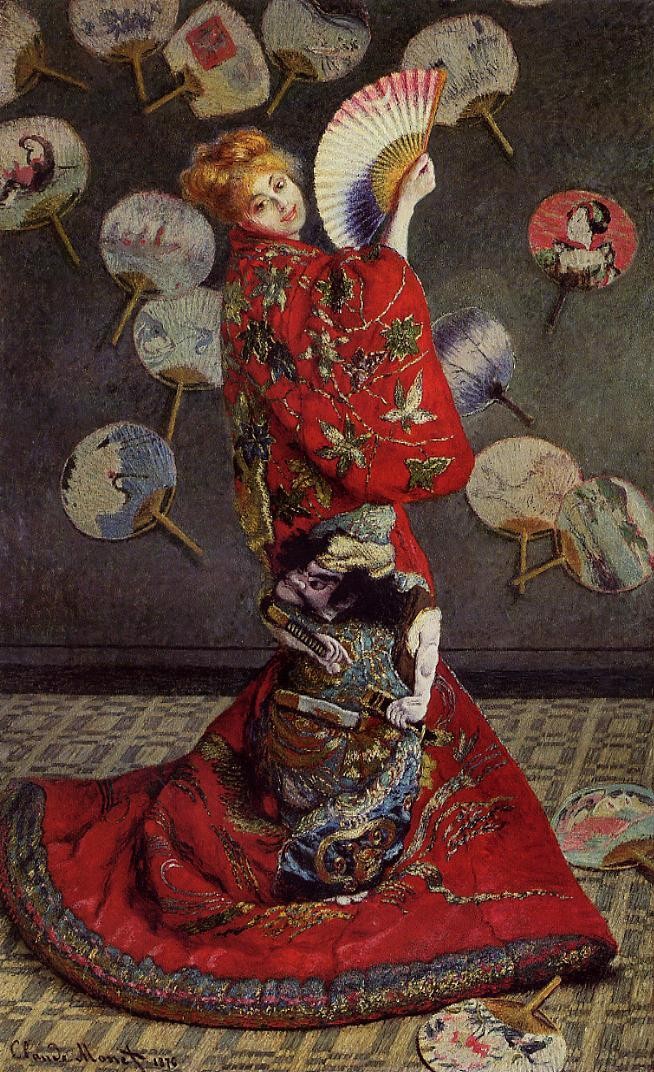
"La Japonaise (Camille Monet in Japanese Costume)" by Claude Monet (1876)
Artists in Europe staged "Japoneries", where subjects draped themselves in kimonos, surrounded by Japanese props, as featured above with Monet's wife. European designers began to use kimono methods in their own creations, with coats and dresses emulating the uchikake kimonos appearing in the early 20th century. Traditional Western fashion had placed emphasis on volume and the curvature of the body. Instead, the kimono introduced an unorthodox cylindrical structure and straight-edged silhouettes, which designers began to experiment with. The kimono offered fresh ideas to the West, ultimately shifting the notion of shape, form and femininity in fashion.
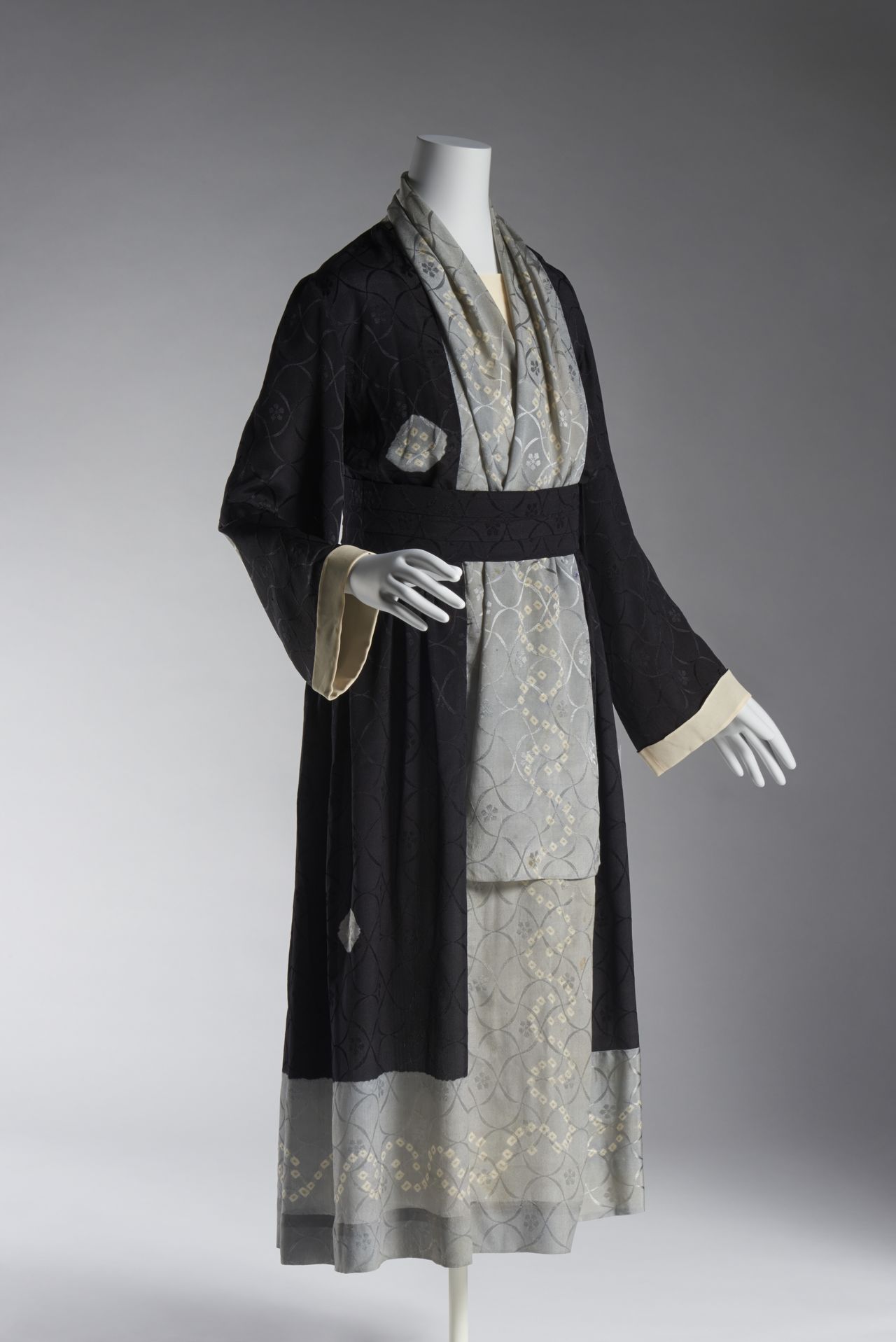
Kimono Coat by Paul Poiret (1920-1930)
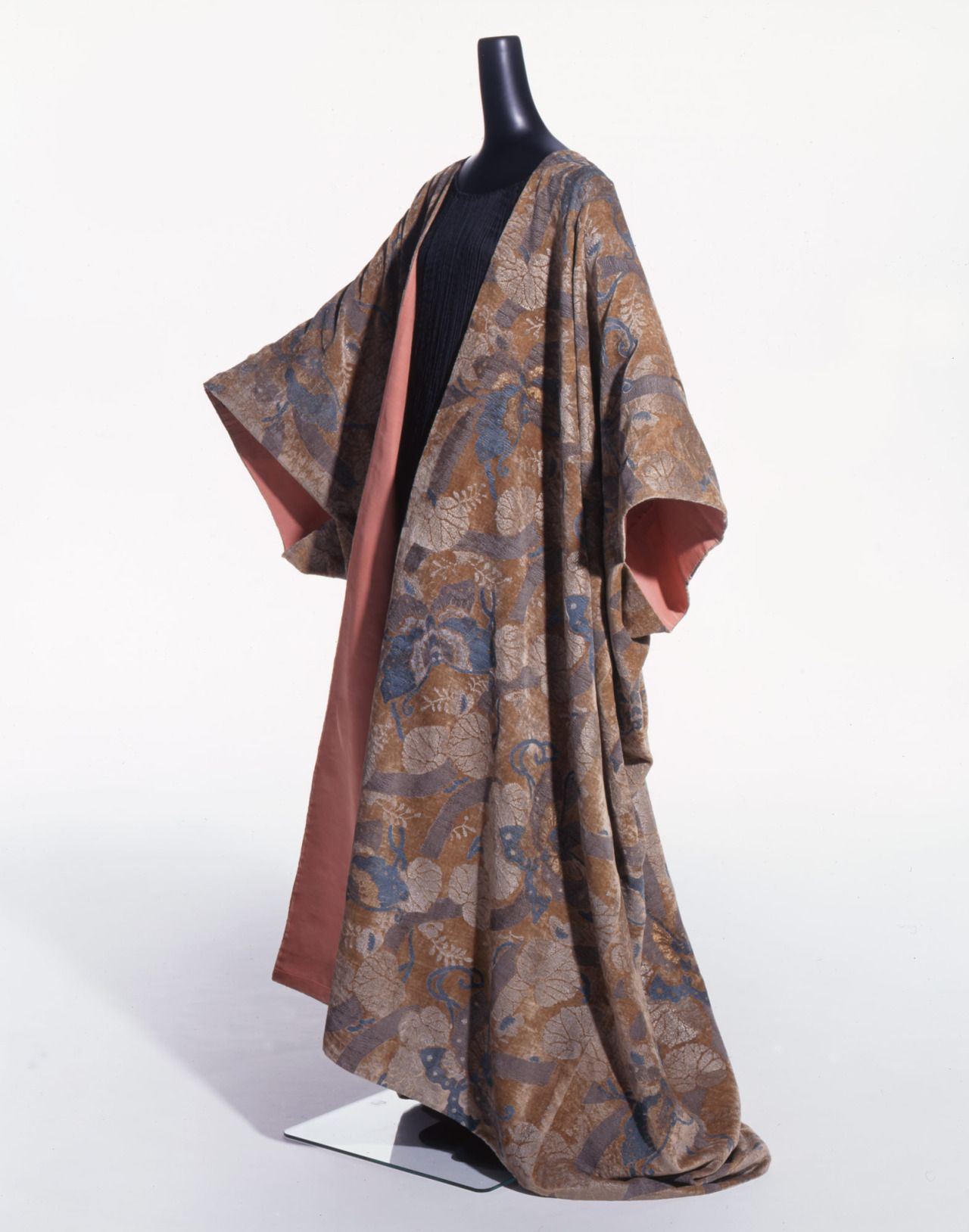
Kimono coat by Mariano Fortuny (ca 1910's)
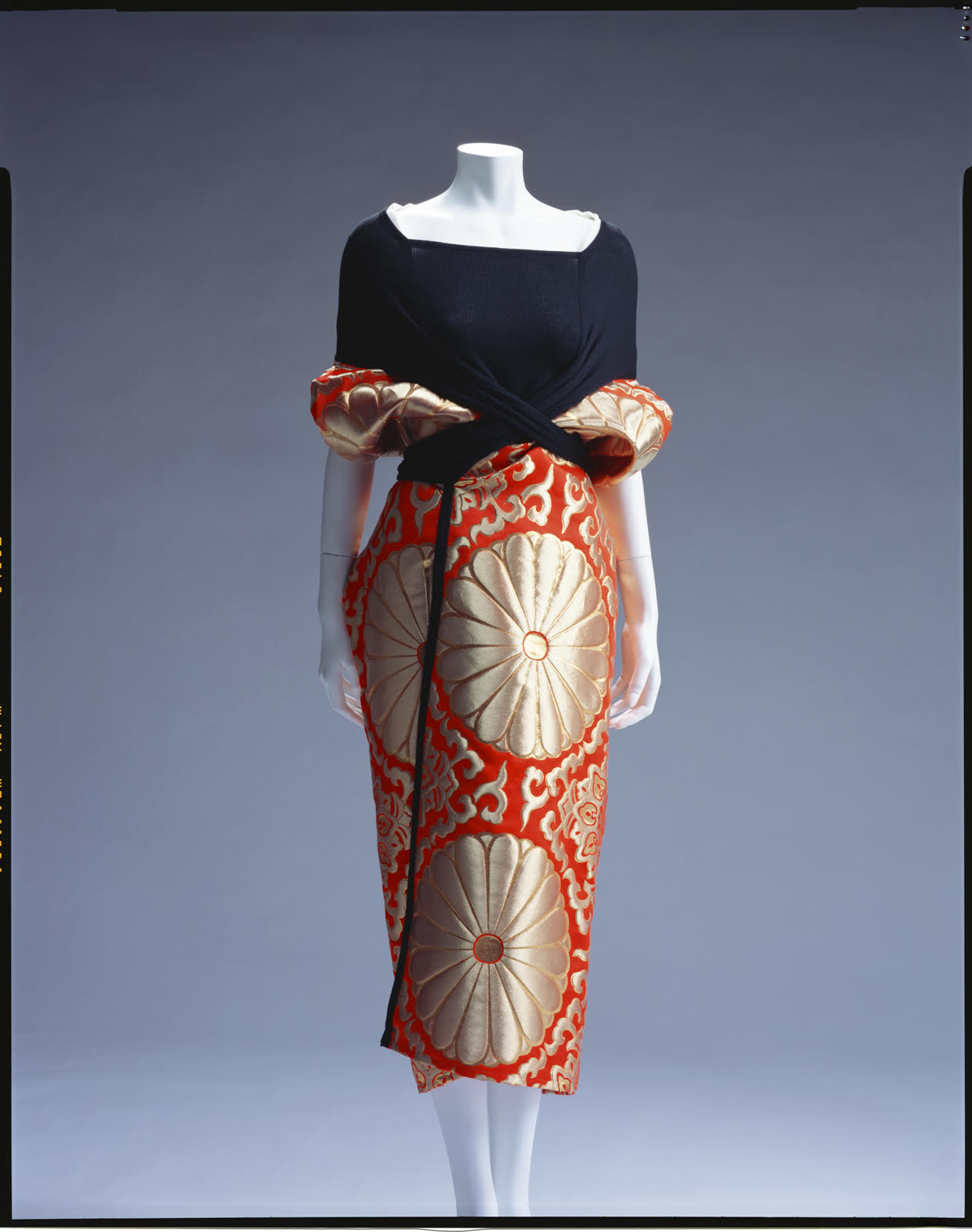
Spring/Summer 1995 dress by Yohji Yamamoto
I haven’t even begun to scratch the surface of the influence of the kimono. There are people and institutions far more qualified than I on this topic. On a more personal note, I can trace my own potent memories of cultural exchange back to when I was a child. Over the summer, I would invite my non-Japanese friends over and we would spend hours dressed up in yukata (summer kimonos). I thought it was the coolest thing, to be the only kid in class who owned these special gowns and have friends who wanted to wear them too. Every year, we would go to the annual Cherry Blossom parade in the spring, singing Japanese songs and admiring the beautiful kimonos people wore. Some of those friends have gone on to become fluent in Japanese, visit Japan and even live there at some point! And to think that what started off as dressing in yukata as children may have had a profound influence on their life trajectory… Unsurprisingly, I strongly believe that things like art (in all forms!) can be a powerful vehicle to promote understanding and foster dialogue. I won't speak for all Japanese people, but my experience has been this: Japanese people absolutely welcome foreigners engaging with cultural traditions such as wearing kimonos or attending tea ceremonies, as long as they respect the customs and industry. In particular, kimonos must be worn a certain way -- there are firm guidelines on how to fold and tuck the various layers, colors carry significant meanings, and certain styles may not be appropriate for all occasions. But all of that can be learned.
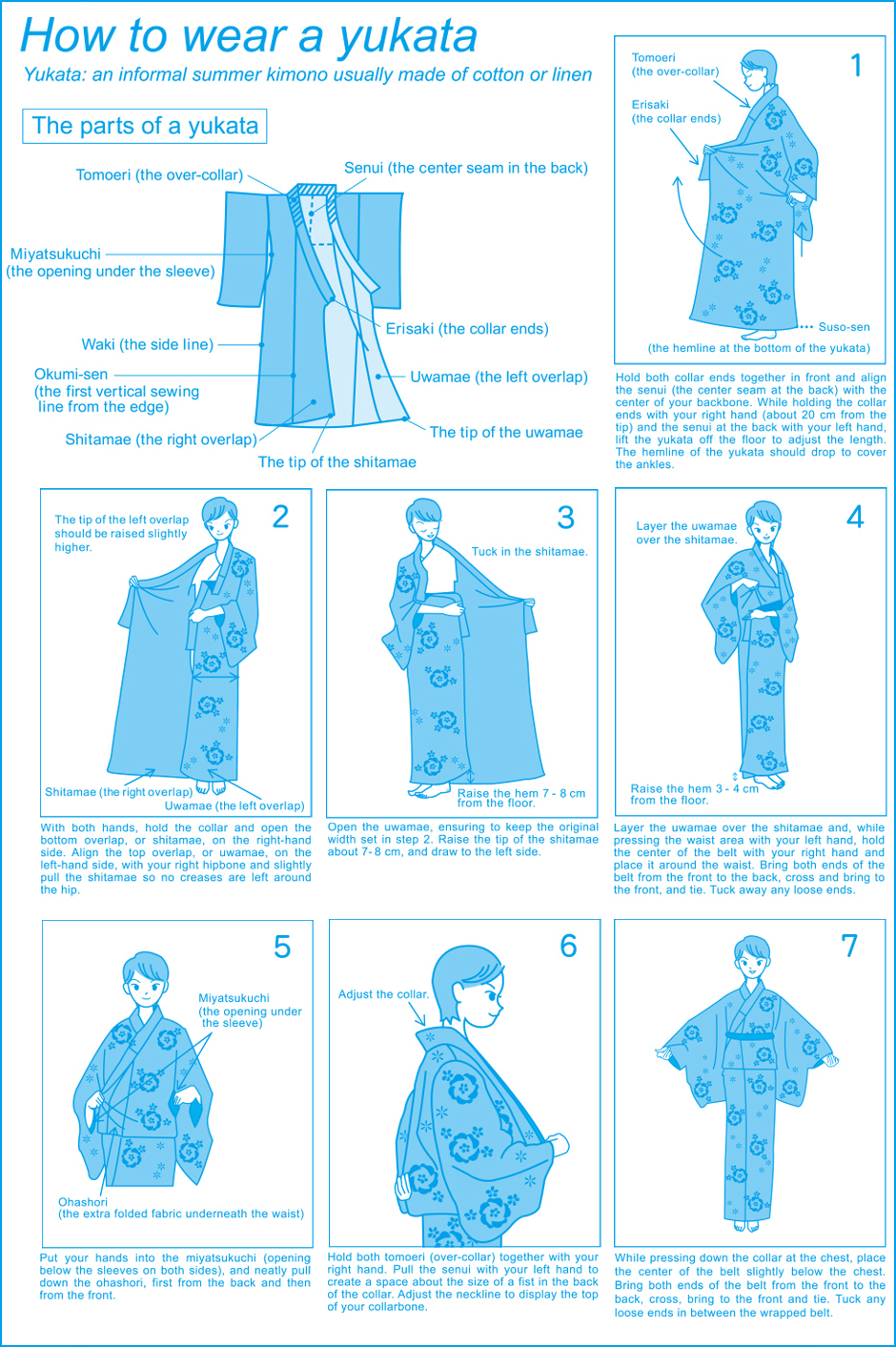
How to wear a yukata, by Uniqlo (more info here)
The issue with Kim's "Kimono" isn't "Check out the audacity of this non-Japanese person using a Japanese thing". The issue is when you divorce the kimono from its purpose and history and erase the narrative for personal gain. As someone who spends a lot of time thinking about aesthetic associations, I'm truly struggling to see the connection between what she's selling and the history, symbolism, craftsmanship of the kimono.
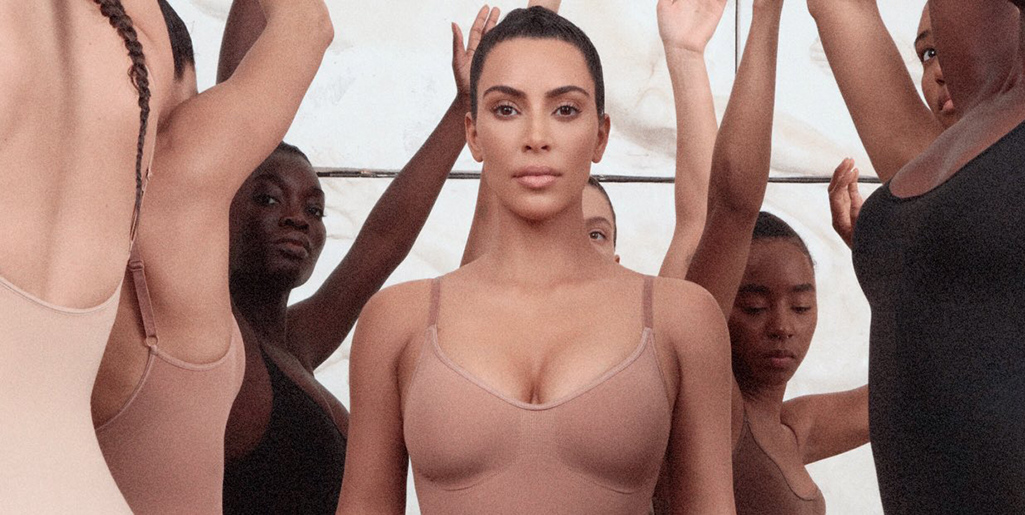
The characters of kimono may literally translate to “a thing to be worn”, but a kimono is not just any garment you throw on. It’s a distinct part of Japanese culture that — in the 19th century, when the term was coined — embodied so much of what it meant to be Japanese during a time of rapid modernization and turbulent change. Kimonos were and continue to be an expression of national pride. To strip all that narrative away for a “catchy” name? Shameful.
It is our responsibility to constantly be learning and be aware of history, to listen rather than play armchair expert after 5 min of social media scrolling, to resist the urge to silence. (And yes, I am aware that learning is a privilege — it requires time, access to materials and the ability to recognize reputable sources — but listening and empathy are free). As far as I know — I am not privy to the inner workings of the Kardashian business — this is not what Kim's team is doing. I haven’t heard of any kimono experts who were consulted during the development of the brand. I'm seeing critical comments on her Instagram get erased daily. There doesn't even appear to be any Japanese models in her campaign so far. I am skeptical of her and her team's capability to recognize the offense they have committed, to hear the outrage of the Japanese people, and ultimately rebrand the line to something noncontroversial. If a brand is aware enough to create a line inclusive of various skin tones, they would presumably be aware enough to not appropriate a term that is replete with tradition and artistry. Instead, what she’s done is deliberately use people’s inclination towards social justice as a promotional tool, knowing that social media is just an outrage machine. It’s an old and tasteless tactic. And here I am, contributing to that outrage machine. I hope, at the very least, I was able to impart some historical context on the way.
